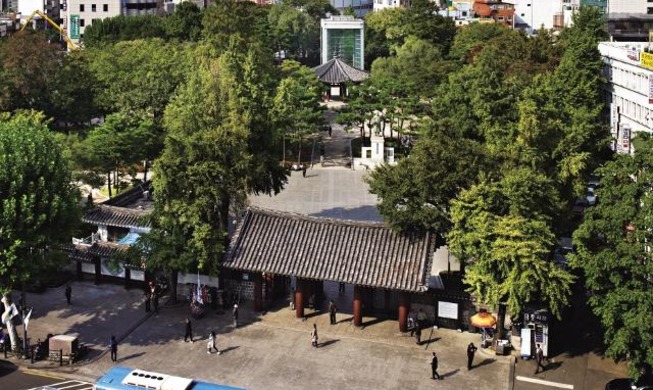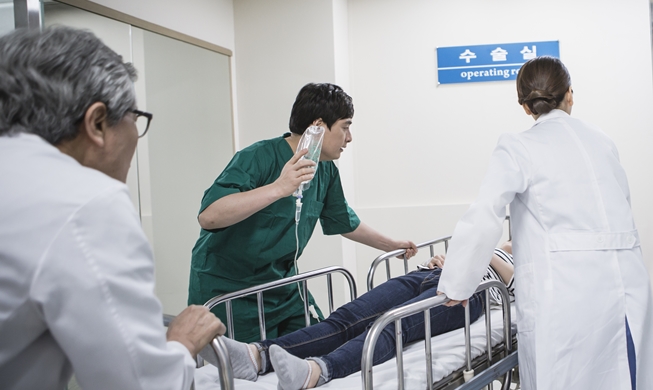- 한국어
- English
- 日本語
- 中文
- العربية
- Español
- Français
- Deutsch
- Pусский
- Tiếng Việt
- Indonesian
By Lee Jihae
Photos = Lee Jeongwoo
To mark the 80th anniversary of national liberation this year, the Ministry of Patriots and Veterans Affairs on March 17 designated Korea Memorial Road, a pilgrimage route for military veterans that connects historical places and area attractions that reflect the nation's spirit of independence. Seoul has three such routes.
The following three venues on the second route are where visitors can feel the struggle and dedication of the country's independence activists.
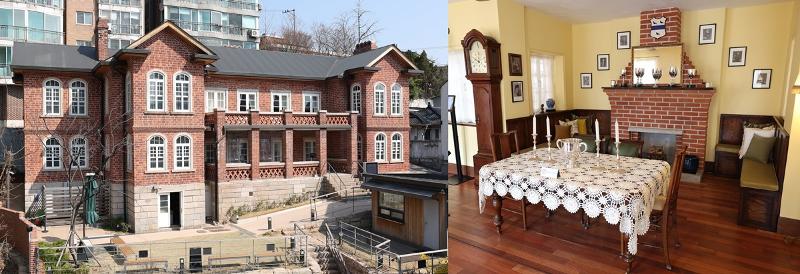
Dilkusha in Seoul's Jongno-gu District is a house built in 1924 by American expat Albert W. Taylor. On the left is the building's exterior and on the right is a replica of the living room.
Dilkusha: home of American expat who loved Korea
Address: 17, Sajik-ro 2-gil, Jongno-gu District, Seoul
On a hill in the capital's Jongno-gu District is the quaint red brick house Dilkusha, a Persian term meaning "heart's delight." It was built in 1924 by American expat Albert W. Taylor and his wife Mary.
Taylor was a mining supervisor and correspondent for The Associated Press, reporting to the world the funeral of Emperor Gojong, March First Independence Movement and Jeamri Massacre. The latter incident saw 20 civilians die inside a church after Japanese troops and police trapped them there and set the building on fire, while another 30 homes burned down.
The Taylors' son Bruce was born on Feb. 28, 1919, the day before the independence movement erupted, and the father accidentally found papers hidden in his baby's hospital bedsheet that were copies of the Korean Declaration of Independence.
Taylor wrote an article on this and gave it and copies of the declaration to his brother William, who hid them in his shoes while going to Japan and later sent the materials to the U.S. This was how the world got to know of the movement.
When the Pacific theater of World War II broke out in 1941 and ties between the U.S. and Japan worsened, the Japanese Government-General of Korea in 1942 expelled several American expats including the Taylor family as citizens of an enemy country.
Because his life was in Korea, Taylor tried many times to return but suddenly died in June 1948 of a heart attack. His widow took the remains of her husband, who had missed Korea dearly, and buried them in September that year at Yanghwajin Foreign Missionary Cemetery in Seoul's Mapo-gu District.
Today, Dilkusha is a permanent exhibition venue for the Taylor family and their contributions to the independence movement.
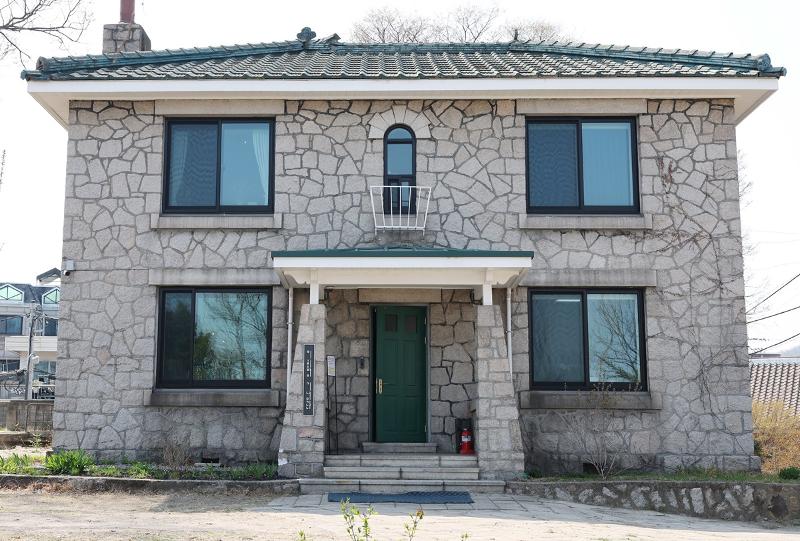
Lee Hoe-young Memorial
Lee Hoe-young Memorial: 6 brothers who exchanged riches for independence
Address: 15, Sajik-ro 6-gil, Jongno-gu District, Seoul
Lee Hoe-young Memorial honors the six Lee brothers -- Gun-young, Seok-young, Cheol-young, Hoe-young, Si-young and Ho-young -- who gave up all their assets to dedicate themselves to regaining national independence after Korea lost its sovereignty.
The siblings were born to one of the country's most prestigious and affluent families, but after Korea was annexed by Japan in 1910, they sold all their properties and headed to Manchuria, China. Their rush to sell meant that they did not get market value for their properties, and they left behind whatever they failed to sell.
They raised at the time KRW 400,000, which would be worth KRW 60 billion today. Had the brothers gotten market value for their assets, they would have received an amount equal to KRW 2 trillion today.
With their money, the brothers built Shinheung Training Center (later renamed Shinheung Military Academy) in Manchuria, where they trained about 3,500 liberation fighters for 10 years. Graduates included those who led victories against imperial Japanese forces at the battles of Fengwudong and Qingshanli in 1920.
The school, however, was closed that year due to Japanese oppression and financial difficulties. The Lee family paid operating costs and student living expenses but eventually the money ran out, leading the brothers so destitute that they could barely afford even corn porridge.
Lee Hoe-young, who planned the assassination of the commander of the Japanese military, was caught and tortured to death in prison. The eldest brother Gun-young and the third Cheol-young both died from disease and the second Seok-young from starvation, with the youngest Ho-young and his wife and children going missing.
Only the fifth brother Si-young survived and returned to Korea after independence.
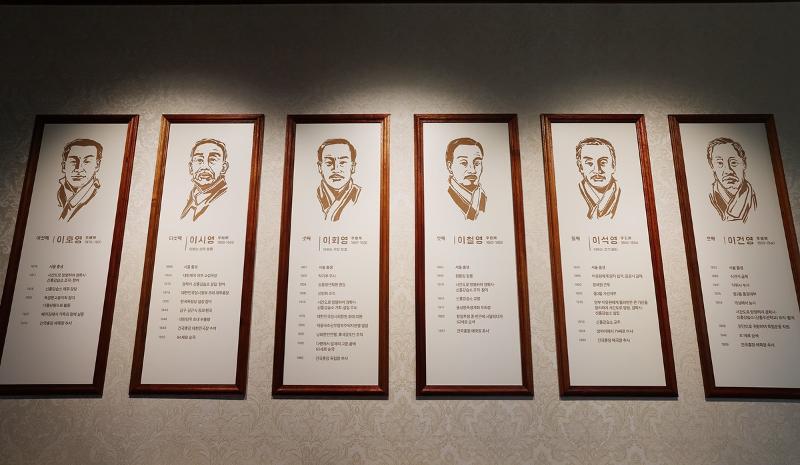
Lee Hoe-young and his five brothers gave up all their wealth and opened Shinheung Military Academy in Manchuria, China, training many pro-independence forces.

On the left is Gyeonggyojang's exterior and on the right is the building's reception room.
Gyeonggyojang: last building of Korean Provisional Gov't
Address: 29, Saemunan-ro, Jongno-gu District, Seoul
This Western classical-style mansion stands out among modern hospital buildings in the area. Gyeonggyojang was the last headquarters of the Korean Provisional Government (KPG) after national liberation and where its head Kim Gu (Koo) was assassinated.
Named Jukcheomjang upon its completion in 1938 after former Japanese diplomat Takezoe Shinichiro, whose surname is pronounced "Jukcheom" in Korean, the building was the home of pro-Japanese collaborator Choi Chang-hak, who grew wealthy through mining. After the country gained independence in 1945, Choi offered Kim temporary residence at the house after the latter's return to Korea from Chongqing, China.
Kim renamed the building to Gyeonggyojang, which served as KPG headquarters. After the launch of the KPG's state council, it was the main venue to protest the trusteeship of the Korean Peninsula by the Soviet Union and the U.S.
Kim, who long sought a unified government to govern the peninsula, was assassinated on June 26, 1949, at this building by Republic of Korea Army Lt. Ahn Doo-hee.
Gyeonggyojang is now a historical exhibition venue.
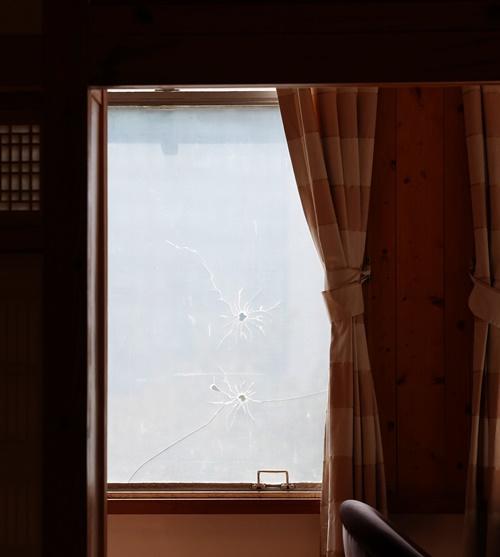
This is a replica at Gyeonggyojang of the second-floor window with bullet marks where Kim Gu was assassinated by Republic of Korea Army Lt. Ahn Doo-hee.
